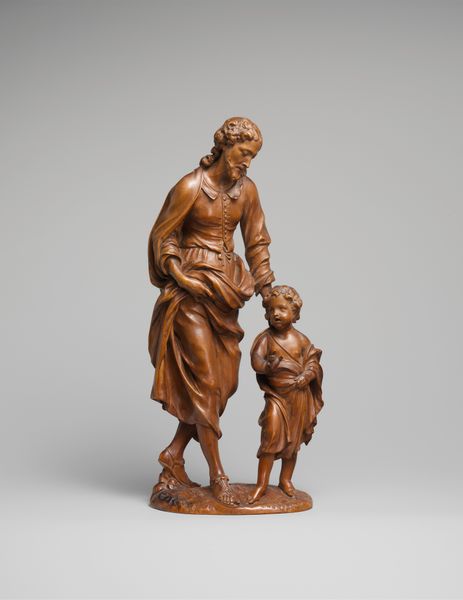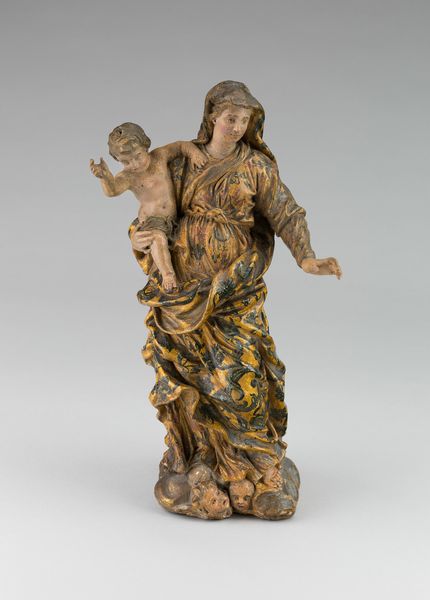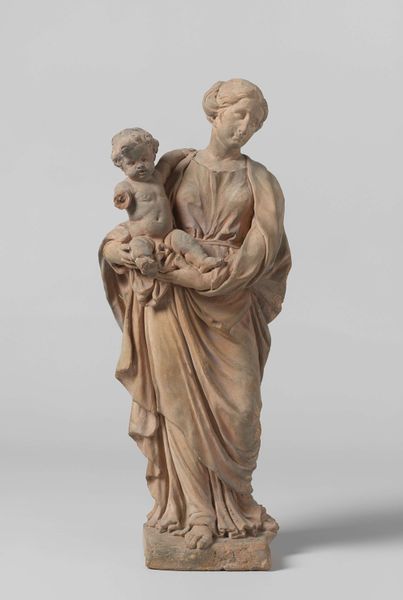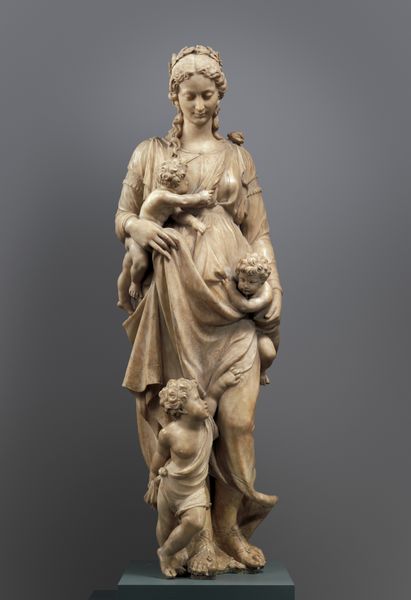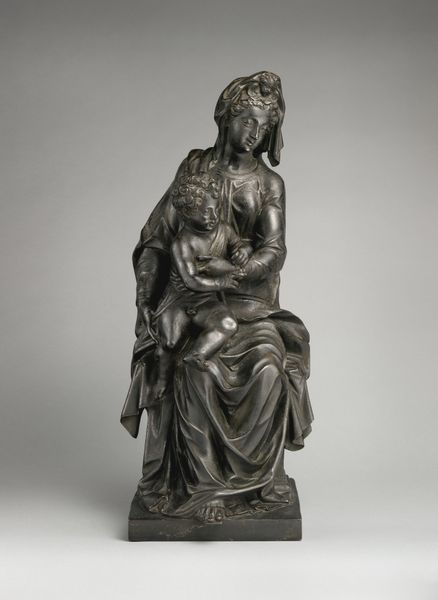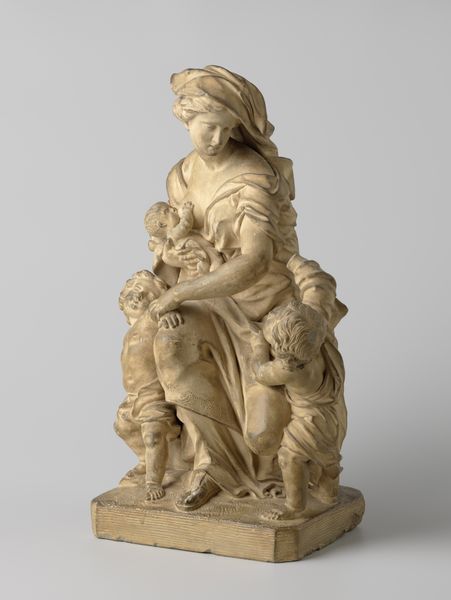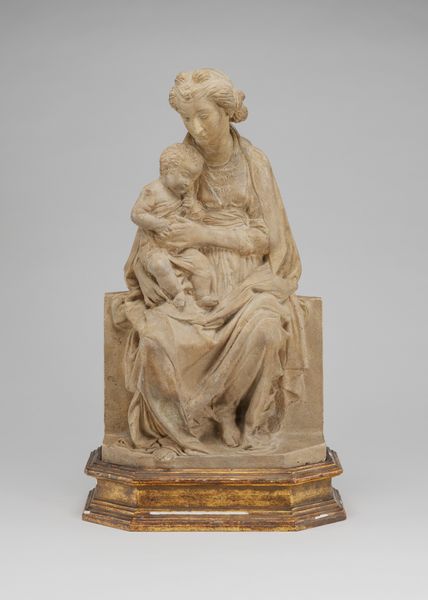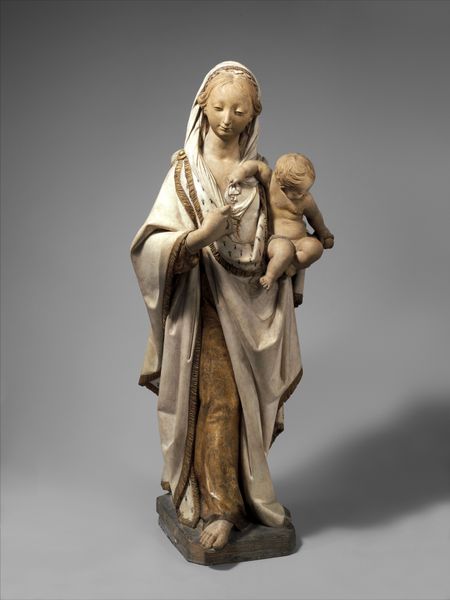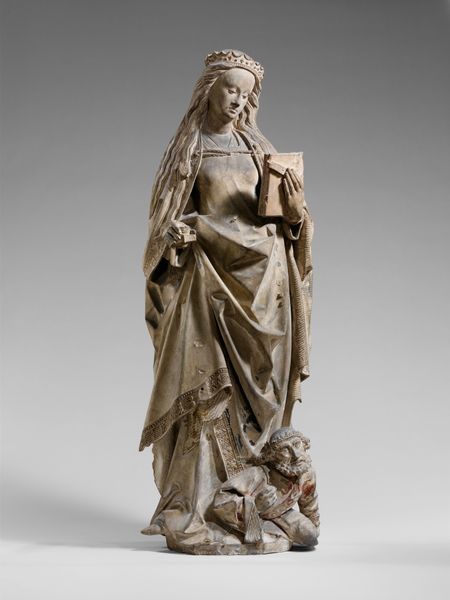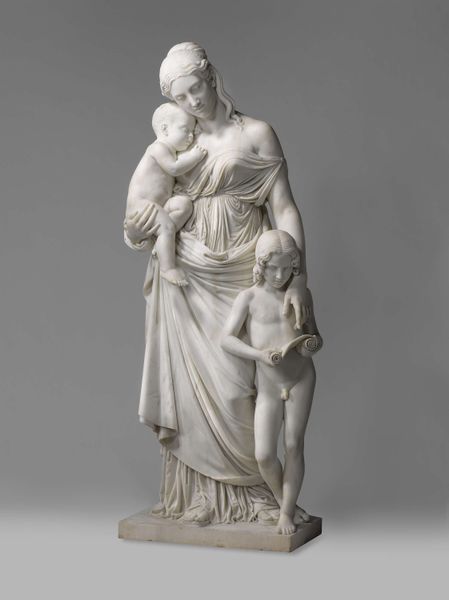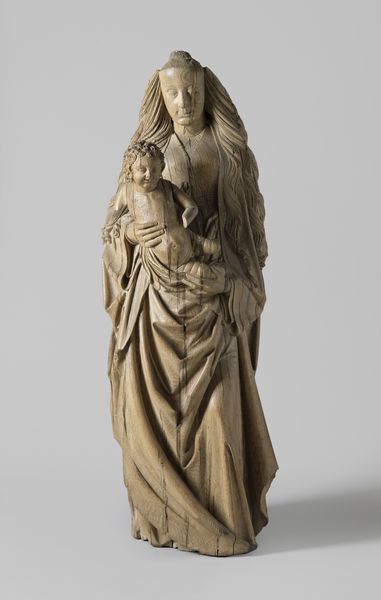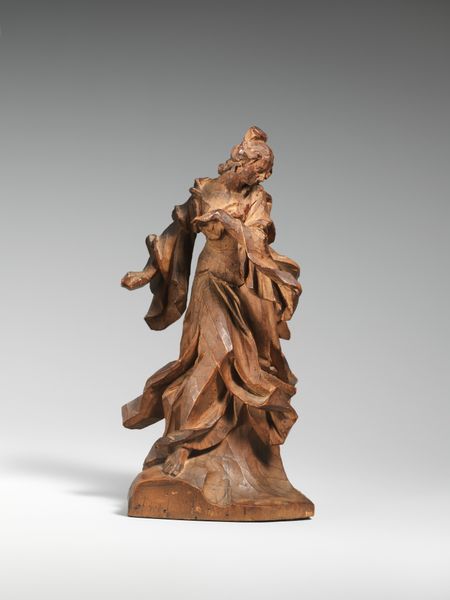
sculpture, wood
#
portrait
#
baroque
#
sculpture
#
figuration
#
sculpture
#
wood
Dimensions: height 17 cm, width 7.5 cm, depth 6 cm, height 2.5 cm, width 5 cm, depth 5.2 cm
Copyright: Rijks Museum: Open Domain
Editor: We're looking at "Virgin and Child", a wooden sculpture from around 1650 by Jan van (III) Doorne. I’m immediately struck by the soft, flowing quality of the drapery, especially considering it's carved from wood. What stands out to you about this piece? Curator: What I find compelling is how this sculpture reflects the changing role of religious imagery during the Baroque period. Consider the Reformation, which had a profound impact on the production and reception of religious art. How might this sculpture be a response to that socio-political upheaval? Editor: That's interesting! So, is it trying to reassert the power of the church through beauty? Curator: Precisely! Think about the Counter-Reformation and how the Catholic Church used art to reaffirm its doctrines. The emotional intensity and dynamism of Baroque art were tools to engage viewers and inspire devotion. The way the Virgin tenderly holds the child, her gaze, and the flowing lines – they’re all designed to evoke empathy and reinforce her divine role. It served as propaganda but in a gentle and appealing visual way. Editor: I never thought about religious art as having a political role at that time. Is the artist making a political statement? Curator: Absolutely, every depiction, especially those displayed publicly, reinforced certain ideas and power structures. How the image is disseminated and understood in a public context matters. Editor: It gives me a whole new appreciation for "Virgin and Child"! It is more than just religious artwork; it's deeply rooted in socio-political dynamics of the Baroque era. Curator: Exactly. Thinking about this sculpture not just as an artwork, but as a cultural and political object enriches our understanding of its purpose and impact in 17th-century society.
Comments
No comments
Be the first to comment and join the conversation on the ultimate creative platform.

